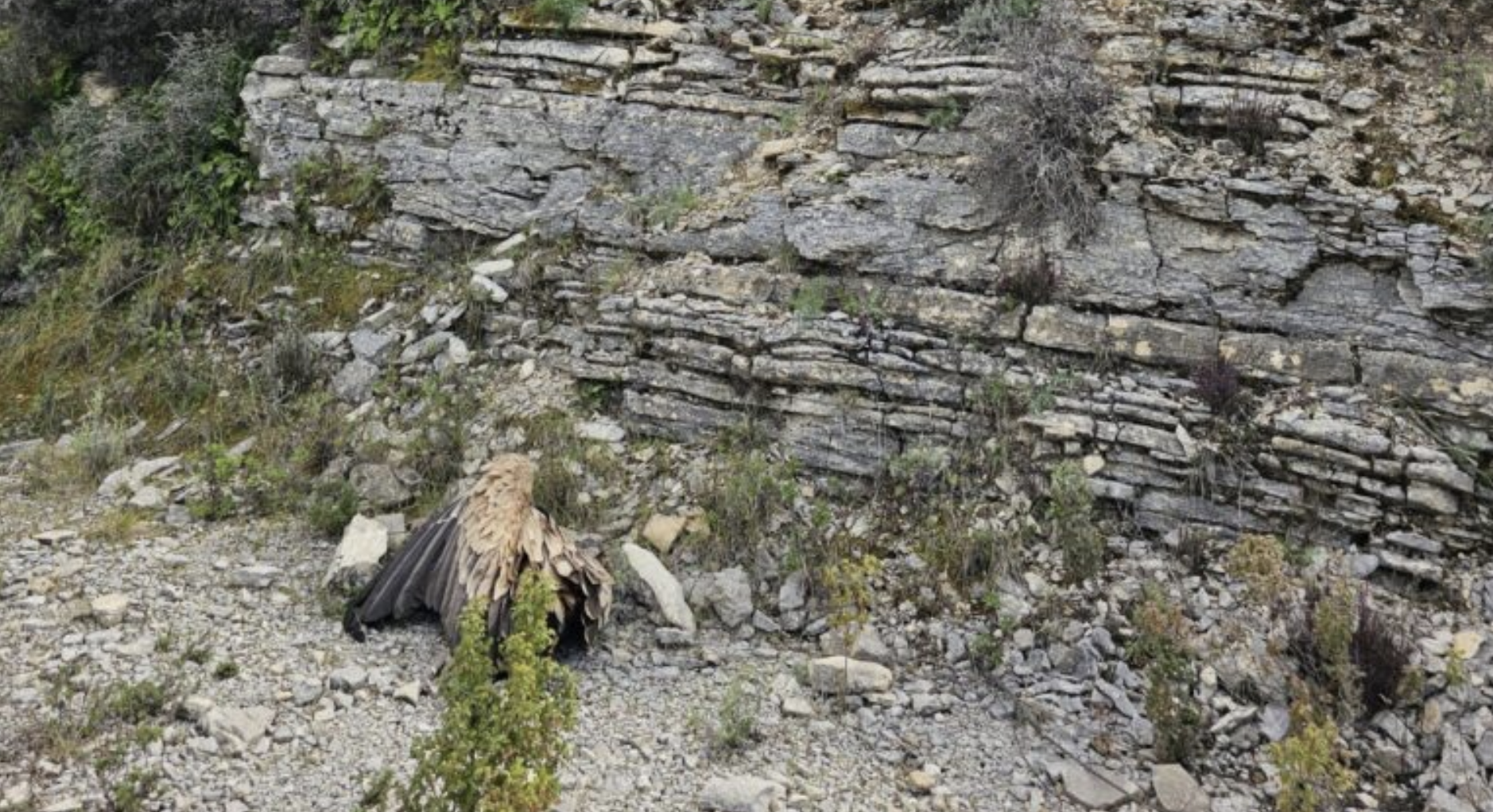
A dead Griffon vulture was found at a short distance from a wind turbine in the regional unit of Rhodope, in Thrace, Greece on September 26.
From the vulture’s movements, as recorded by the satellite transmitter that was fitted on the bird on June 2018 as part of the LIFE Vulture (LIFE14 NAT/NL/000901) project, the findings on the ground, (and the expert autopsy and analyses) it is clear that the vulture died after a collision with a wind turbine.
The area where the dead bird was found is part of the Natura 2000 site “Filiouri Valley”, designated as such due to its importance for the Griffon vulture. The specific Natura 2000 site is one of many in Thrace, a region of exceptional ornithological importance, hosting habitats of European-wide significance mainly due to the presence of large birds of prey and aquatic birds
93 wind turbines are lined up in the area where the dead bird was found, creating an artificial barrier for the flight paths of the protected and threatened bird species of Thrace. These 93 wind turbines are only part of the 216 wind turbines already installed and less than half of those that are planned to be installed under the Special Spatial Plan for Renewable Energy Sources in the broader Thrace region. The death of the Griffon vulture clearly emphasizes the need for proper planning and siting of wind parks in Thrace.

For more than a decade, WWF Greece has investigated the dangers that may arise for the birds from the development of wind farms in the region. During 2008 – 2010 WWF carried out the most systematic and holistic carcass survey in Greece in order to record the impacts of the installed wind farms on the protected avifauna of the region. Based on the derived mortality estimates, and if the provisions of the Special Spatial Plan for Renewable Energy Sources are implemented, it is projected that at least 80 birds of prey will be killed per year, 10 of which will be vultures. Such a high death rate, threatens the survival of many of the birds of prey in the region.
“Unfortunately our predictions have come true. When not properly sited, the wind farms in the region constitute a real threat for the birds of prey. It is absolutely necessary that the competent authorities take this very seriously into account during the permitting process for new wind farms”, stressed Mr. Lefteris Kapsalis, Dadia project scientific associate, WWF Greece.
“This case shows once again that conservation of birds cannot be successful if done within national borders only. Common approaches in planning the energy infrastructure are needed in order to guarantee the survival of birds of prey populations in the Rhodopean Mountains. This accident illustrates also the good collaboration between Bulgarian and Greek NGOs working literally as a joint team. The bird was tagged in Bulgaria and found thanks to the quick exchange of information and reaction of the Greek colleagues”, stated Stoycho Stoychev conservation director of the Bulgarian Society for the Protection of Birds /BirdLife in Bulgaria.
Realising the survival threats for the region’s birds of prey but focusing at the same time on the urgent need to turn the energy model towards renewables, WWF Greece has submitted specific proposals, which allow for the development of wind farms in the region, while securing the conservation of the valuable, rare bird species.
“A win-win solution, ensuring the installation of wind farms and minimizing their impacts on birds can be found. The dead vulture under the wind turbine in Thrace sends a powerful message to the Ministry of Environment and Energy: the upcoming review of the Special Spatial Plan for Renewable Energy Sources must secure that biodiversity conservation will constitute, along with the wind potential, a fundamental criterion for the priorities that it will set”, stated Dr. Ioli Christopoulou, Nature Policy Officer at WWF Greece.
“The unfortunate occurrence of finding a dead vulture under a wind turbine makes us ponder how vulnerable are the populations of these rare bird species”, stated Dr. Stavros Tsiantikoudis, Forester – Environmentalist at Dadia Forest National Park, adding that the Management Body, according to the National Environmental legislation, participates in the environmental permission procedures for this type of projects, having expressed frequently and intensively its worries about the respective installation of wind farms in Thrace region.
“We believe that an integrated assessment of the preferable places for installation of wind farms, with the participation of all the relevant agencies, local authorities, experts and NGO’s is urgent, to ensure the minimum expectable impacts for the rare kinds of vultures and other valuable bird species”, concluded Dr. Tsiantikoudis.
Full press release ![]() WWF press release PRL_DEAD VULTURE_THRACE.pdf Adobe Acrobat Document 430.1 KB Download
WWF press release PRL_DEAD VULTURE_THRACE.pdf Adobe Acrobat Document 430.1 KB Download





